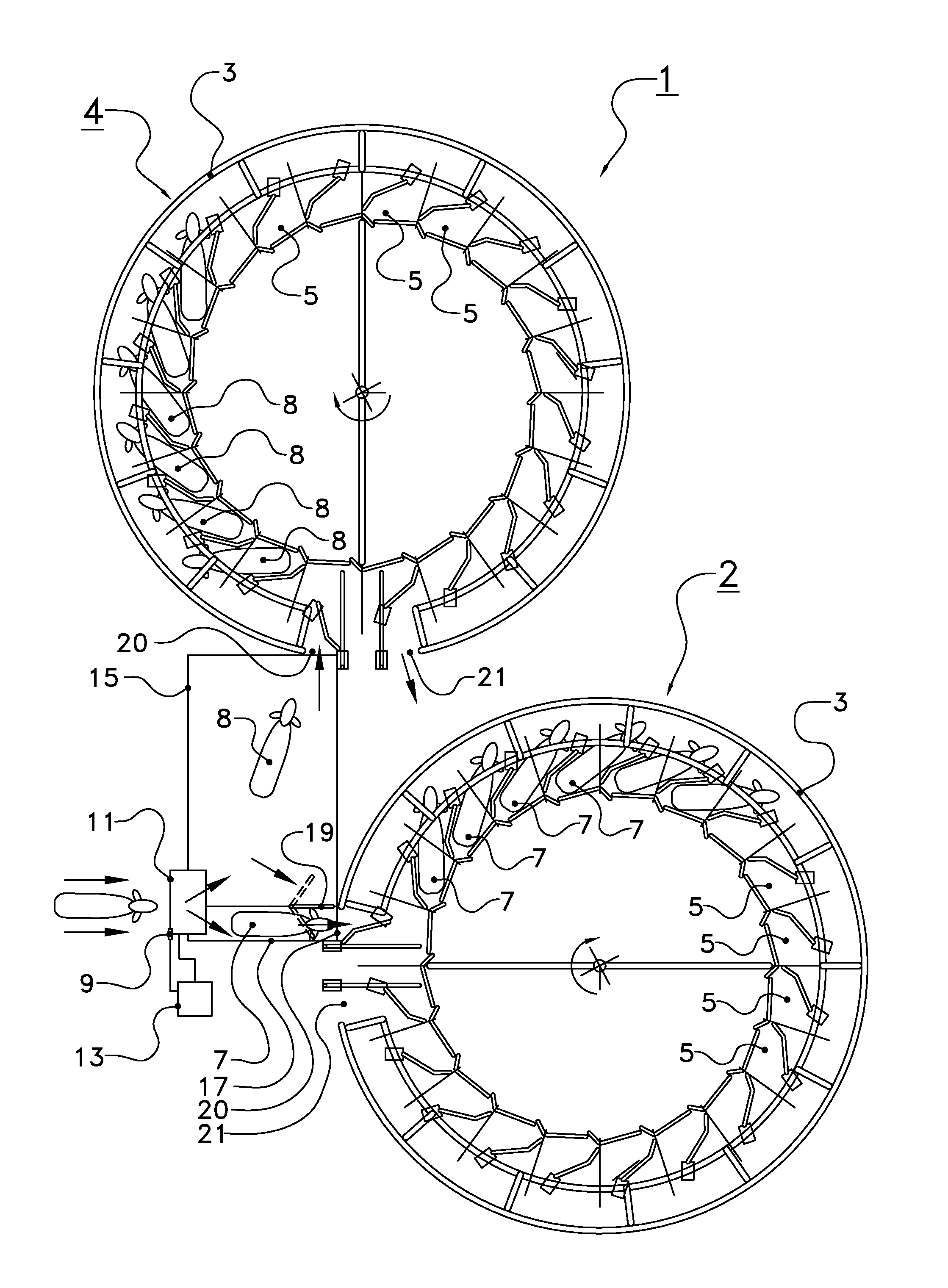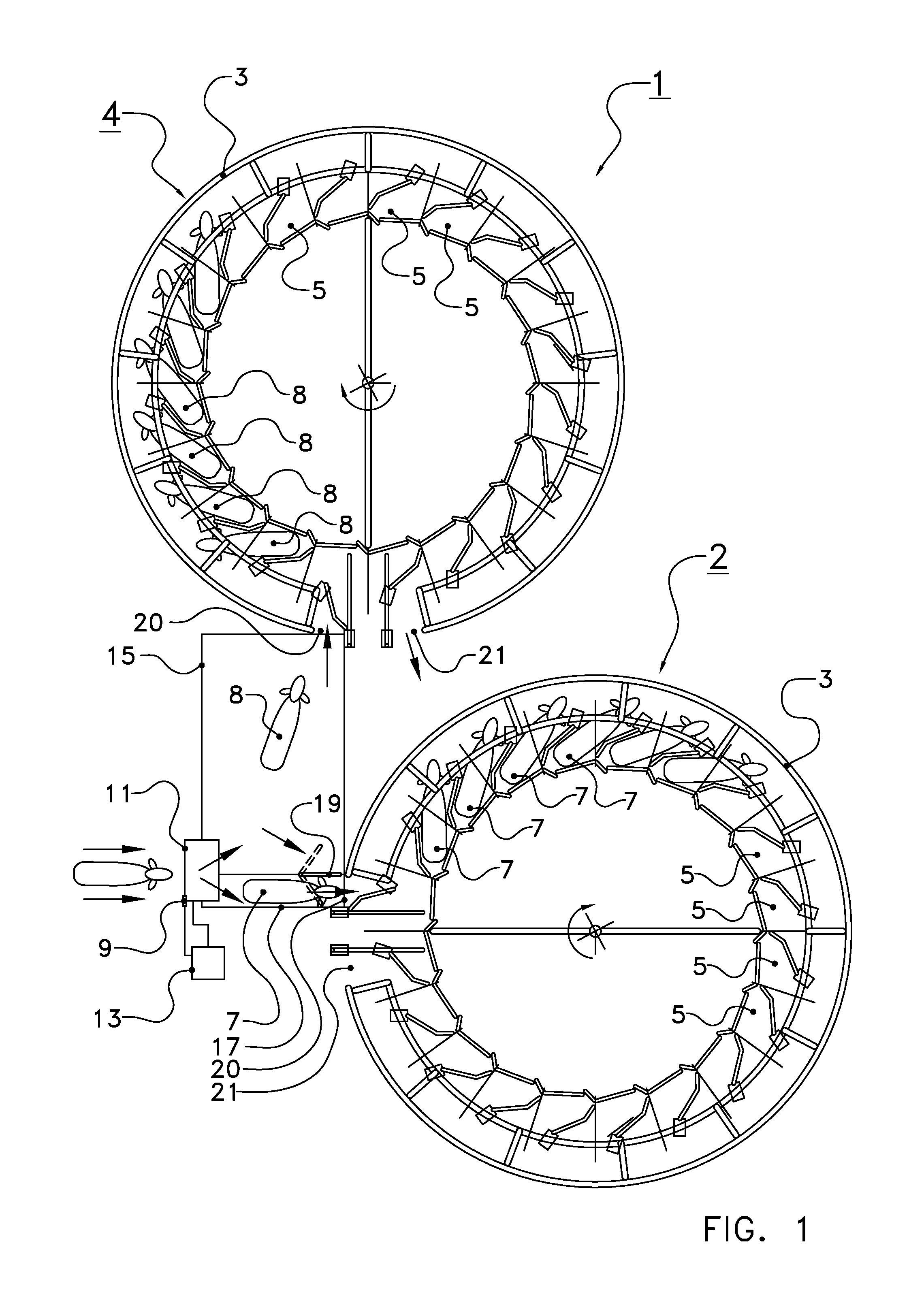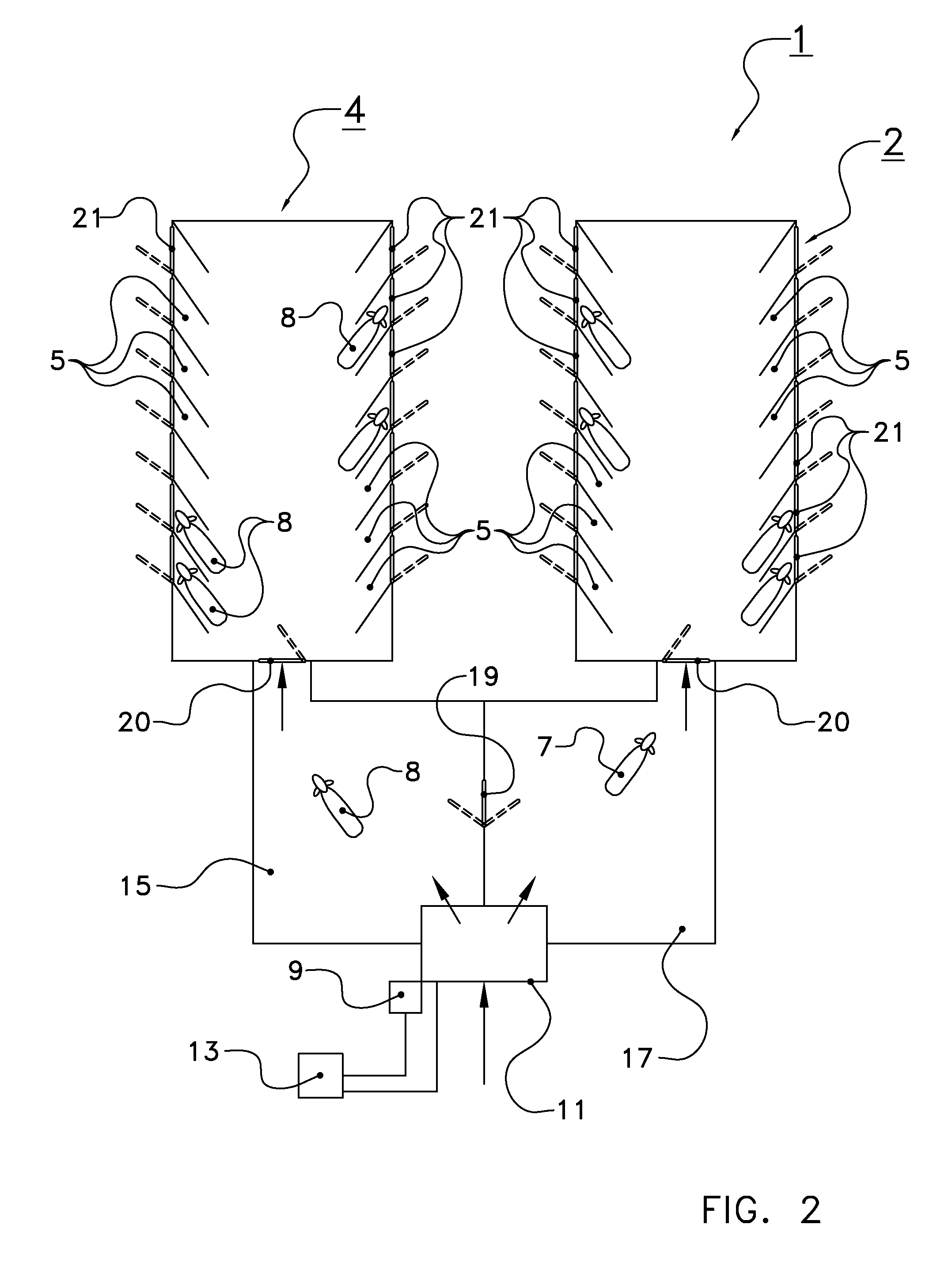Milking system and method for milking a herd of dairy animals
a dairy animal and milking system technology, applied in the field of milking systems for dairy animals, can solve the problems reduced milk production capacity of this milking device, and reduced health of slow dairy animals, so as to reduce waiting time for the second group of dairy animals and limit the rotational speed of each carrousel
- Summary
- Abstract
- Description
- Claims
- Application Information
AI Technical Summary
Benefits of technology
Problems solved by technology
Method used
Image
Examples
Embodiment Construction
[0032]The following is a description of certain embodiments of the invention, given by way of example only and with reference to the drawings.
[0033]The milking system for milking a herd of dairy animals is indicated as a whole by 1 in FIG. 1. The milking system 1 comprises two milking devices 2, 4 which are designed as carrousels in this exemplary embodiment. Each carrousel 2, 4 comprises a round rotating platform 3 which is rotatable about a substantially vertical centre line (see the arrows). The carrousels 2, 4 are each drivable by a drive device (not shown). On the rotating platform 3 of each carrousel 2 there are provided a number of milking stalls 5 which are each provided with milking facilities. Each carrousel 2, 4 has an entrance 20 for admitting a dairy animal to the carrousel 2, 4. From the entrance 20 the admitted dairy animal is led into one of the milking stalls 5. Each of the carrousels 2, 4 is also provided with an exit 21. After an almost complete rotation, the dair...
PUM
 Login to View More
Login to View More Abstract
Description
Claims
Application Information
 Login to View More
Login to View More - R&D
- Intellectual Property
- Life Sciences
- Materials
- Tech Scout
- Unparalleled Data Quality
- Higher Quality Content
- 60% Fewer Hallucinations
Browse by: Latest US Patents, China's latest patents, Technical Efficacy Thesaurus, Application Domain, Technology Topic, Popular Technical Reports.
© 2025 PatSnap. All rights reserved.Legal|Privacy policy|Modern Slavery Act Transparency Statement|Sitemap|About US| Contact US: help@patsnap.com



